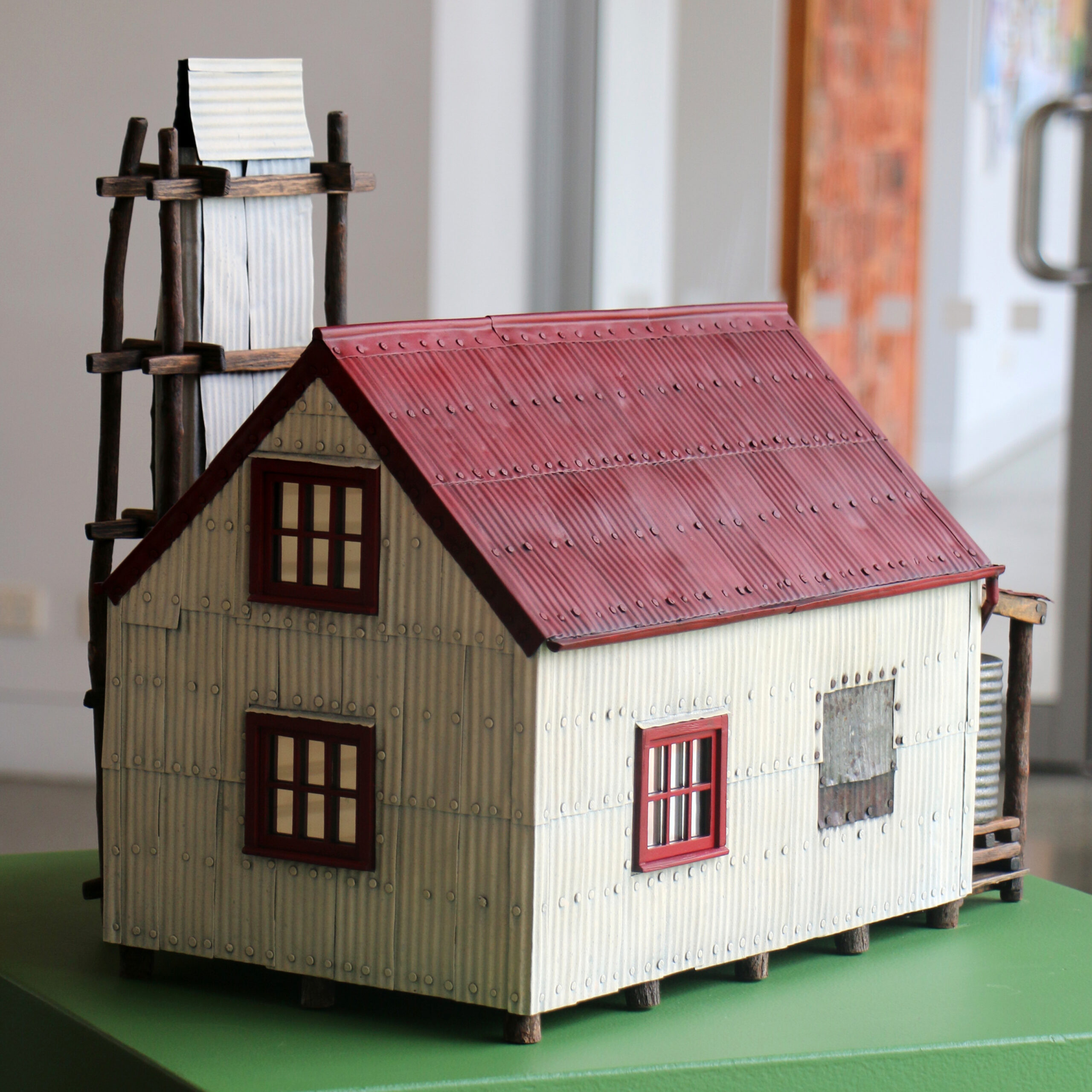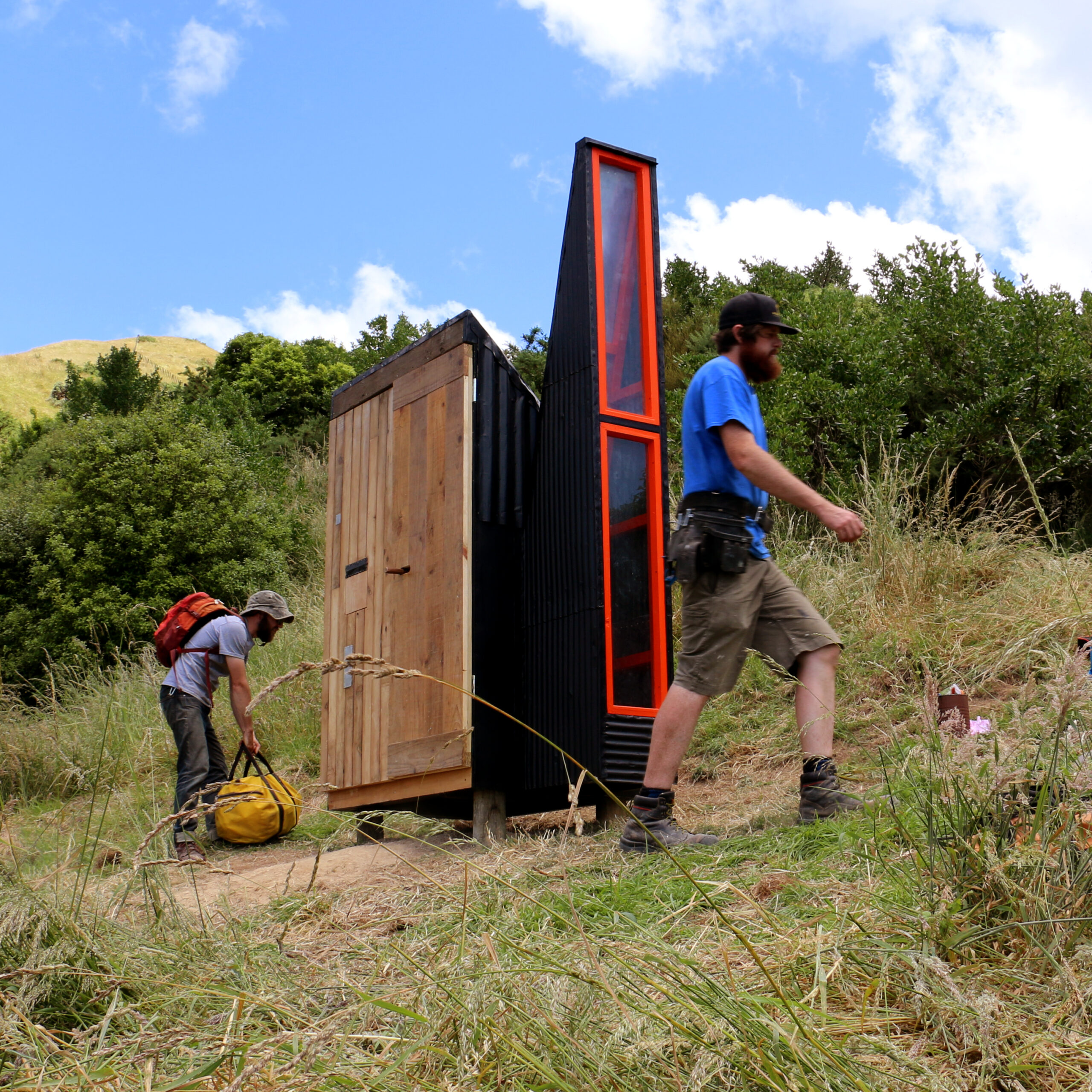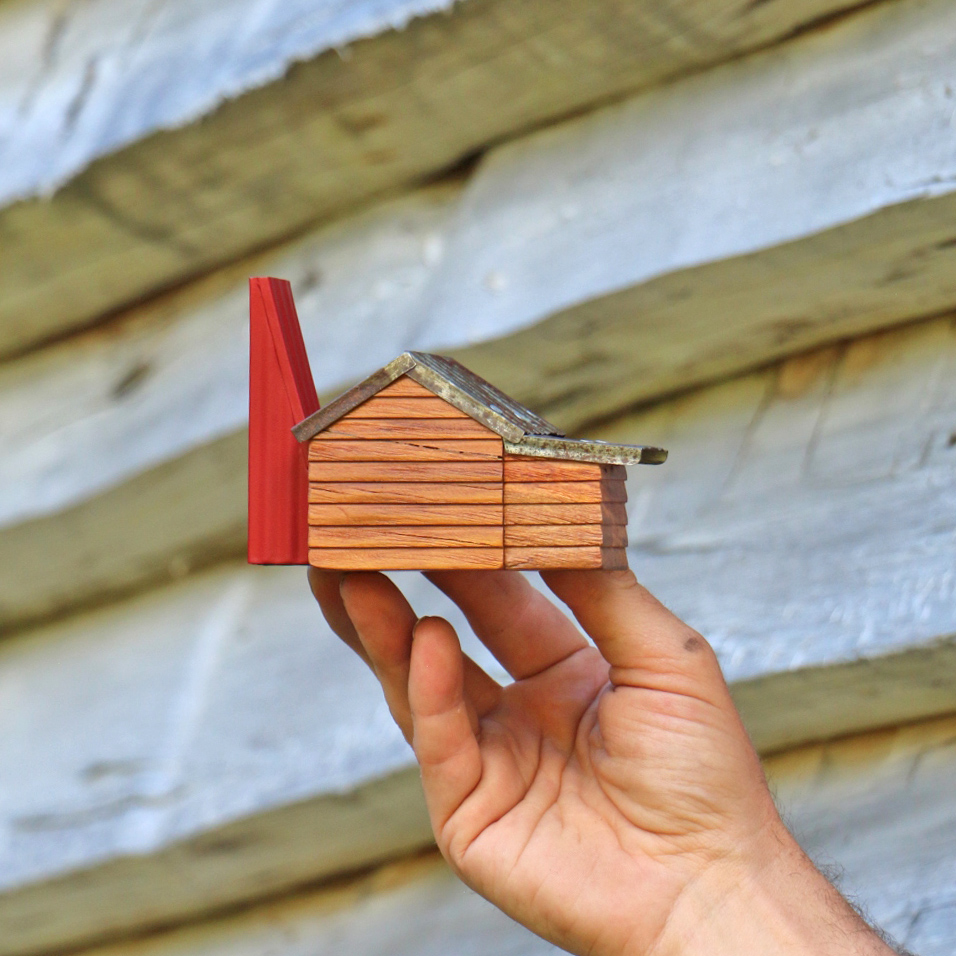



The idea was sparked after being released from Uni with only cheap rent and a cool cafe job in our grips (plus the degrees and debt, I guess). We started taking home large tin cans to make stuff with. We’ve always loved corrugated iron and bush huts. We knew that collecting enough of something (even trash) turns into a resource. We made all sorts of things (candle holders, little huts, letterboxes, cabinets) as well as quirky art installations that we put in the park with logbooks. People started interacting with them and we went from there.
Black Flora was the first time the two of us worked together on a project. We were flatmates (and both worked at the cinema) but hadn’t hung out much until Kemi landed the summer residency at Enjoy Gallery on Cuba St. He bit off way more than he could chew and Niko was super impressed (and secretly knew he wouldn’t pull it off without her help). Building these epic cardboard caves with skewers and wheatpaste was so fun we knew we could do anything together if we wanted to. So we combined our names and got to work on making a living from our art a reality.
We like to use any type of sheet metal we can get our hands on even if we need to dismantle a caravan to get it, or jump into a skip or recycling bin. Most impressive material is probably Totara beams from Bret McKenzies dad’s shed, as well as two unusual windows that turned into Whareroa Hut, near Paekakariki.
People collect our huts like they collect real huts. Hut bagging (like geocaching) is all
about maps so it made sense to include this info with each Mini Hut. The chimneys are
a convenient space to slide a corrugated business card map into, so it just stuck.
They differ in many ways. Huts that must live outside are considered temporary, usually for an event or festival. For them to last they must have a kaitiaki group looking after them. Luckily there are many awesome local groups who look after sections of public land and we’ve had the pleasure of working with a few. Putting a hut in a public spot is much more work as you need to include interaction with people into the design. This is hugely rewarding when done right!
The Mini Huts need just one person to love them, so when we moved to the Waikato we decided to invest in their production. We miss the interaction we had in the hut books though so we’re releasing a mini Intentions Book this year. Being out in nature is inherently creative so we’re hopeful some people still know how to put pen to paper.
We’ve always been inspired by rural living but it was by accident we ended up living it. After starting in cramped Poneke we have embraced the space and access to materials the Waikato provides. There is so much building waste that can be utilised, we have literally built a house out of it. Start raiding building site skips if you need to build anything, honestly! Also the people are great, farmers really love nature and are pragmatic just like us.
We hiked up the Cobb Valley (behind Takaka) with the kids to stay at Chaffey Hut. This hut is a work of art that has been built TWICE to incredible detail! It’s so cosy and only a couple hours walk in (made slightly harder having to carry a toddler). We made a Mini Chaffey and want to create a new experimental version as it’s definitely our fave. The foundations and floor are massive rocks! We want to incorporate this into our build but they have to be real rocks so we’re still figuring that out.
Backcountry huts are full of stories. We started being inspired by the stories of the actual materials (often native timbers and salvaged metal) but the human connections are super interesting too. Some of the dramas that go into making a mountain hut are pretty crazy. Before helicopters the hut materials all had to be walked in by volunteers in some epic locations. We’re interested in this so we figure others might be too, which is why we tell our Hut of the Month stories on IG.
We don’t try to aim for an accurate scale. We’re more interested in the essence and character of huts. Our Mini Huts are more minimalist than realistic and we are not afraid to use our artistic licence. Alongside these icons we experiment with scale under the constraints of our tin can material. It’s been fun to create intricate doors and windows on these huts that aren’t done justice at Mini Hut scale.
We balance like anyone balances, teetering on the edge haha. It’s not easy raising kids and getting anything else done. We are somehow running a growing business, building our own tiny house (while living in it) and raising two kids. While having kids does make you stronger (like any challenge) it’s not a job that pays. We are very grateful for our small local school!

We try to avoid accidents in the workshop as they are often messy and expensive. But we do have many instances of happy coincidences that have helped us move forward. For example if we hadn’t run into Bret McKenzie on the street and given him some art he may not have found us in time to book us for our biggest project to date (Urban Hut Club for Aotearoa Festival of the Arts).
Field Hut was clad in corrugated iron precut to the same size for ease of carrying on men’s backs back in 1924. We had fun making mini versions of these for our Field Hut Bigature.
You’ll find us on Instagram (@Kemi_Niko) which will take you to our website (Keminiko.com) which has a sign up link for our mailing list. Hut drops happen monthly and often sell out before I can make the link public so best be signed up! We’ll be releasing our Mini DOC book before xmas which will be an affordable way to get
involved too.
Columns3 months ago
Columns3 months ago
Columns3 months ago
Columns3 months ago
Columns3 months ago
Columns3 months ago
Columns3 months ago
Columns3 months ago